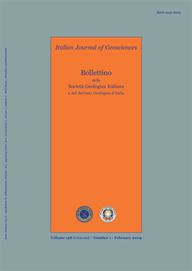
Neo-deterministic seismic hazard scenarios for North-Eastern Italy
Antonella Peresan(*)(**), Elisa Zuccolo(*), Franco Vaccari(*)(**) & Giuliano F. Panza(*)(**)
(*) Dipartimento di Scienze della Terra - Università degli Studi di Trieste, via E. Weiss, 4 - 34127 Trieste. Italy. Email: aperesan@units.it
(**) Te Abdus Salam International Centre for Theoretical Physics, SAND Group, Miramare, Trieste
Volume: 128 (2009) f.1
Pages: 229-238
Abstract
A neo-deterministic approach to seismic hazard assessment is proposed that, based on the available knowledge of the physical properties of the Earth structure and of the seismic sources allows for a time dependent definition of the seismic input, through the routine updating of earthquake predictions. In this way a set of deterministic scenarios of ground motion, which refers to the time interval when a strong event is likely to occur within a given region, can be defined at regional and local scale, thus providing information that can be useful in prioritizing the mitigation actions in North-Eastern Italy.
A basic step in the integrated approach will consist in the realistic description of the seismic input, including space and time indications, and of wave propagation in laterally heterogeneous media. Constraints about the space and time of occurrence of the impending strong earthquakes are provided by the intermediate-term middle-range earthquake predictions (performed by means of the algorithms CN and M8S) and by the pattern-recognition of the areas prone to large events. The scenarios of expected ground motion, associated with the alarmed areas are then defined by means of full waveforms modelling at bedrock, based on the possibility to compute synthetic seismograms by the modal summation technique.
The practical example of regional ground motion scenarios at bedrock, which can be obtained by the proposed procedure, is provided considering CN and M8S alarmed areas, as well as the earthquake prone nodes (M ≥ 6.5) that determine the maximum ground motion in the cities of Milan, Trieste and Brescia. A detailed evaluation of the expected ground motion, considering site effects, is then proposed for the city of Trieste.
Keywords
Ground motion scenarios, pattern recognition, morphostructural analysis, seismogenic nodes, earthquake prediction, alerted areas, site effects.
Get Full Text